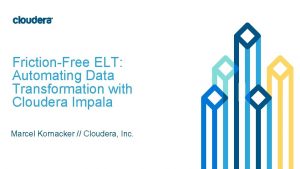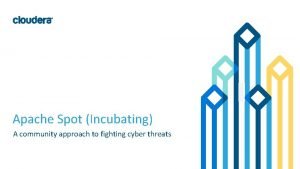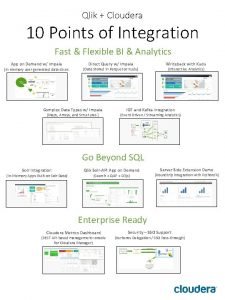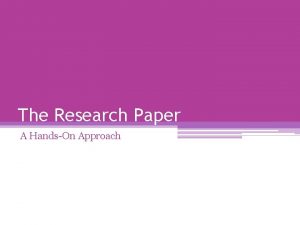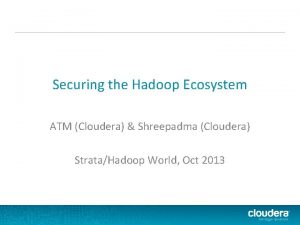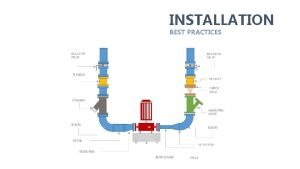Cloudera Image for handson Installation instruction https cern








- Slides: 8


Cloudera Image for hands-on • Installation instruction – https: //cern. ch/zbaranow/CVM. txt 2

Agenda • • Now HBase architecture Data operations - hands on Summary

SQL Pig ? No. Sql columnar store Cluster resource manager Hadoop Distributed File System Scripting Data exchange with RDBMS Sqoop Workflow manager Oozie Machine learning Mahout Spark YARN Map. Reduce Hbase SQL Impala Log data collector Flume Coordination Zookeeper Distributed file system Large scale data proceesing Recap Sequential data scanning with SQL (direct data access) HDFS Sequential data scanning with SQL using Map. Reduce Sequential data scanning with Java Hive Sequential data scanning with Scala, Python, Java, SQL 4

What is HBase? • No. SQL database on Hadoop – Key – value store, schema-less – For storing big tables with many rows and columns – Consistent inserts, updates and deletes of rows • Optimized for random reads – Data partitioning by row key values – Index on row key values – Bloom filter – Column store – Scalable

What HBase is not? • • Not a relational database Transactions are not ACID Index available only on a row key Weak for sequential data scanning

When to use? • In general: – For data too big to store on some central storage – For random data access: quick lookups of individual records – The data can be represented by key-value sets • Database of binary records (serialized objects, documents) • When data set – has to be updated – is sparse – records have variable number of attributes – has custom data types (serialization)

When NOT to use? • For massive data processing/analytics – use MR, Spark, Hive, Impala… instead • For data sets with very high frequency insertion rates – stability concerns - from own experience • Data schema is complex • If “I do not know what solution to use”

